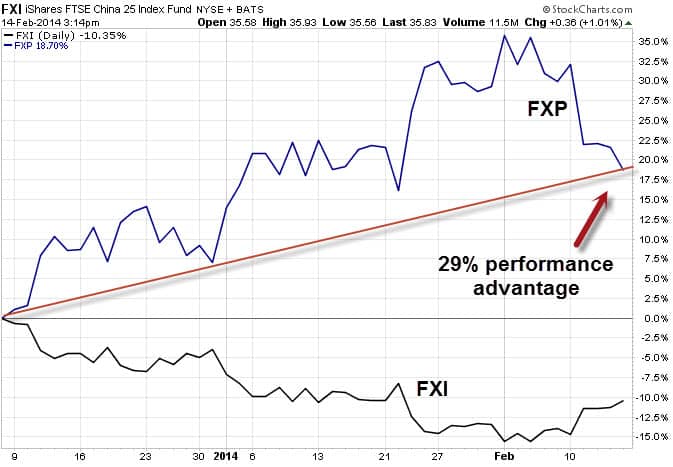Depending on whom you believe, China is either on the verge of economic utopia or a major economic shock. And the data is leaning toward the latter.
Non-performing loans made by Chinese banks soared to $97.5 billion in the final three months of last year, according to the China Banking Regulatory Commission. That matches levels not seen since September 2008 when the global credit crisis was sparked by the demise of Lehman Brothers. Is this time different?
In a post at Project Syndicate, Ian Bremmer and David Gordon of Eurasia Group write:
“In short, China is on the brink of large, necessary, and dangerous transformations that promise to change the country for the better – or make everything, including regional stability, much worse. The entire world has a large stake in what happens next.”
Unfortunately, China’s official data on non-performing loans – bad as it may seem – is a totally unreliable gauge. That’s because no one, not even Chinese officials, have a firm handle on the true scale of busted real estate loans (NYSEARCA:TAO) and bad assets held at Chinese banks. Even auditors, who are taking rough surveys on the potential damage, don’t have a complete grasp of deteriorating credit quality because of the opaque but widely practiced art of balance sheet churning.
Moody’s estimates that more than half of China’s corporate and project infrastructure debt is rated “speculative grade” thanks to a surge in risky lending and aggressive borrowing. This is hardly a bullish backdrop.
Another developing Black Swan event or shock for China’s economy (NYSEARCA:GXC) is its colossal pollution problem.
The 24 million residents living in Shanghai were warned in January that children and the elderly should stay indoors because of life-threatening smog. Has the strain on economic productivity from this human disaster shown up yet in China’s state approved statistics? Will it ever? Shanghai’s PM2.5 levels are more than 10 times the World Health Organization’s recommended range!
AUDIO: Listen to Ron DeLegge @ The Index Investing Show
Metaphorically speaking, China’s economy is running on fumes and its citizens are left with the deadly results of breathing its contaminated air.
Ironically, the only way for China to reach its goal of economic independence and stability is by greater reliance on its citizens via increased domestic consumption versus selling Chinese made products abroad. That will require a big jump in local purchasing power.
Chinese stocks (NYSEARCA:FXI) have slid almost 12% since early December and volatility has been high.
After issuing a 12/6/13 buy alert on ProShares UltraShort FTSE China 25 ETF (NYSSEARCA:FXP) at $58.60, the ETF Profit Strategy Newsletter wrote:
“From our vantage point, the prudent investor has two better choices: 1) Aggressively short Chinese equities, or 2) Aggressively avoid them. Right now, market prices are saying the Chinese stock market will get worse before it gets better. That means if you’re the least bit bullish on Chinese stocks, you best wait for lower prices before plowing in for the long-run.”
On 2/10/14, we sold the final leg of FXP at $75.50 and our blended two-month gain for this trade was 23.5%. FXP aims for double daily opposite performance to large-cap Chinese stocks and more opportunities are ahead for investors who are correctly positioned on the right side of the Chinese market.
The ETF Profit Strategy Newsletter uses technical, fundamental, and sentiment analysis along with market history and common sense to keep investors on the right side of the market. In 2013, 70% of our weekly ETF picks were gainers.
Follow us on Twittter @ ETFguide




